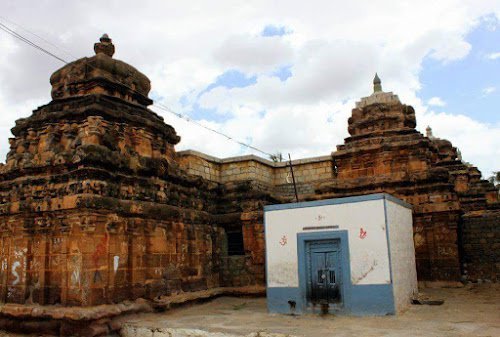Origin
The name 'Rashtrakuta' in Sanskrit means 'Nation' (Rashtra) and 'Tribal leader' (Kuta), revealing their ancestral roots. Several references have been made to Rashtrakutas being descendants of Satyaki.
Did you know?
In the battle of Kurukshetra, Satyaki fought bravely alongside the Pandavas. Satyaki was a skilled warrior and a renowned Ayurvedic practitioner with expertise in surgery (Shalya) and Eye/ENT treatments (Shalakya).
The rise of the Rashtrakuta Dynasty began when Dantidurga, initially a subordinate of the Badami Chalukyas, established the Rashtrakuta Empire by defeating the Chalukya ruler in 753 CE. The Rashtrakutas were influential leaders, brave warriors and intelligent rulers who tussled with other kingdoms like the Pratiharas and Cholas.
Key Ruler
Amoghavarsha Nrupathunga was a historically significant king known for ascending to the throne at 14 and reigning for 64 years. He was admired for his leadership qualities and earned the nickname "Ashoka of the South" due to his characteristics. During his reign, both Kannada and Sanskrit languages gained prominence, and he generously supported many renowned writers and scholars such as Jinasena and Mahaviracharya. The era also produced a famous work, "Kavirajamarga," which guided poets and scholars.
Did you know?
In recognition of his contributions, a road in Bangalore was named Nrupathunga Road, and a university was established in his honour, aiming to inspire students to emulate his wisdom and kindness.
Architecture:
The Kailashnath Temple in Ellora is a remarkable creation of the Rashtrakutas dynasty. The Maharashtra segment will elaborate on its intricacies.

The NAVALINGA Temple: Kukanur, Karnataka * 9th - 11th century
Amoghavarsha I or his son Krishna II, who ruled the Rashtrakuta Dynasty, built the Navalinga temple complex in the town of Kukanur in the Koppal district of the Indian state of Karnataka in the ninth century. It's located north of Itagi and east of Gadag. This temple is one of the nine temple clusters in South India constructed in the Dravidian architectural style. It gets its name, Navalinga, from the presence of a linga, which represents Shiva in Hinduism.
Other notable temples include the Parameshwara Temple in Konnur, Brahmadeva Temple in Savadi, Settavva, Kontigudi II, Jadaragudi, and Ambigeragudi Temples in Aihole, Mallikarjuna Temple in Ron, Andhakeshwara Temple in Huli (Hooli), Someshwara Temple in Sogal, Jain Temples in Lokapura, Navalinga Temple in Kuknur, Kumaraswamy Temple in Sandur, several temples in Shirival, Gulbarga, and the Trikuteshwara Temple in Gadag, which the Kalyani Chalukyas later expanded.
Fun Activity:
Educate people about the historical and cultural significance of these temples. Promote efforts to keep them clean and restore them to preserve their heritage for future generations..
References:
- https://www.ijrpr.com/uploads/V2ISSUE3/IJRPR270.pdf
- https://egyankosh.ac.in/bitstream/123456789/61922/1/Unit-10.pdf
- https://www.worldhistory.org/Rashtrakuta_Dynasty/
- https://shastriyakannada.org/database/english/land%20history%20and%20people/AMOGHAVARSHA%20NRUPATUNGA%20HTML.htm
- http://www.nrupathungauniversityblr.ac.in/abt_nrupa.php
- https://www.deccanherald.com/india/karnataka/land-forgotten-temples-2064198
- https://clioschronicles.in/rashtrakutas-the-patrons-of-art-and-architecture/
